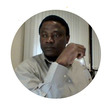Augustine Sam's Blog, page 2
April 21, 2020
#MFRWhooks: Young, Carefree and Broke…
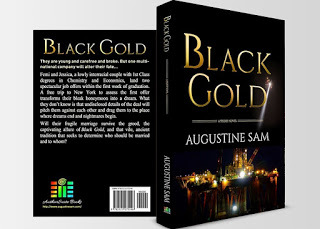 A black man, a white girl, and a deceptive job offer
A black man, a white girl, and a deceptive job offer
#RomanticThriller #Interracial #Blackmail
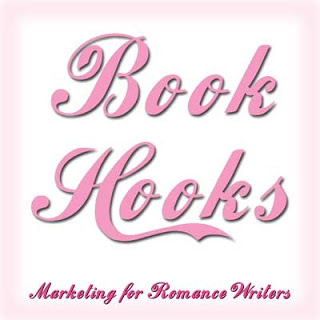 Femi, a young, black graduate with a First Class degree in Chemistry, has no long-term ambitions until he meets Jessica Rhodes, a blonde exchange student from San Diego. When they land two spectacular job offers within the first week of graduation, their bleak honeymoon is transformed into a dream. Egged on by a free trip to New York to evaluate one offer and a 30-day grace period to accept the other, they are surprised to find their future dangling over a multi-billion dollar cliff-hanger as they hop across the Atlantic. What they don't know is that undisclosed details of the deal will not only pitch them against each other but will also drag them to the place where dreams end and nightmares begin.
Femi, a young, black graduate with a First Class degree in Chemistry, has no long-term ambitions until he meets Jessica Rhodes, a blonde exchange student from San Diego. When they land two spectacular job offers within the first week of graduation, their bleak honeymoon is transformed into a dream. Egged on by a free trip to New York to evaluate one offer and a 30-day grace period to accept the other, they are surprised to find their future dangling over a multi-billion dollar cliff-hanger as they hop across the Atlantic. What they don't know is that undisclosed details of the deal will not only pitch them against each other but will also drag them to the place where dreams end and nightmares begin. Will their fragile marriage survive the greed, the captivating allure of Black Gold, and that vile, ancient tradition that seeks to determine who should be married and to whom?
Blurb
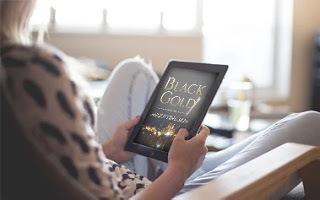 He’s black. She’s white. And they think nothing of it until he takes her home...
He’s black. She’s white. And they think nothing of it until he takes her home...The scene where the young man takes his new American bride back to visit his parents without having first informed them of her existence is riveting, agonizing, and devastating as he runs unsuspectingly into a titanic clash between his parents’ traditional values and his European education, and this passage stands out as a gem in
Published on April 21, 2020 19:00
January 26, 2020
Quotes To Live By
 “If you are lucky enough to find a way of life you love, you have to find the courage to live it.” - John Irving
“If you are lucky enough to find a way of life you love, you have to find the courage to live it.” - John Irving“Without wearing any mask we are conscious of, we have a special face for each friend.”- Oliver Wendell Holmes, Sr.

“We are all in the gutter, but some of us are looking at the stars.”
- Oscar Wilde
 “Obstacles are things a person sees when he takes his eyes off his goal.”
“Obstacles are things a person sees when he takes his eyes off his goal.”- E. Joseph Cossman
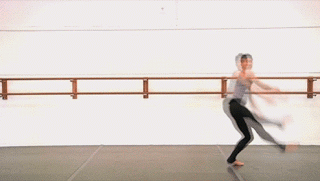

“The artist is nothing without the gift, but the gift is nothing without work.” - Emile Zola

“The future is like heaven, everyone exalts it, but no one wants to go there now.” - James Baldwin
 “There is no greater agony than bearing an untold story inside you.”- Maya Angelou
“There is no greater agony than bearing an untold story inside you.”- Maya Angelou
 “It’s easy to sit up & take notice. What’s difficult is getting up & taking action.”
- Honore de Balzac
“It’s easy to sit up & take notice. What’s difficult is getting up & taking action.”
- Honore de Balzac
 “A great artist is always before his time or behind it.”
“A great artist is always before his time or behind it.”- George Edward Moore

“If you judge a book by the cover you might miss an amazing story”


Published on January 26, 2020 04:01
January 6, 2020
Gems of a Decade
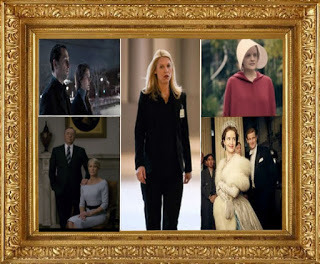
Top Five TV Shows of the Decade
In a time of endless reboots, spanking new productions, and innovative offerings from streaming services, looking back at TV gems of the last decade seems redundant. That’s chiefly because with unprecedented freedom in storytelling, a plethora of daily releases now glut the small screen. But, like every artistic endeavor, there are surefire standouts. And the last decade was no exception. For the more discerning viewer, some TV shows, in fact, are like great literature, they stay with you long after you finished watching them. In that regard, the 2010s packed quite a punch—powerful scripts, excellent cinematography, and outstanding performances. Here are my top five picks:
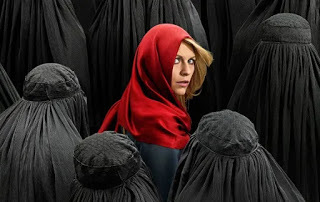 Claire Danes as Carrie MathisonHomeland An addictive, politically charged spy masterpiece [released on October 2, 2011]
Claire Danes as Carrie MathisonHomeland An addictive, politically charged spy masterpiece [released on October 2, 2011]Rarely has an espionage-themed Psychological thriller, bolstered by superb performances elicit a character study as compelling as this. Claire Danes, as Carrie Mathison, a self-destructive CIA agent with an uncanny ability to perceive what her peers can’t, brought her A-game to this critically acclaimed television drama. Bipolar, volatile, and unpredictable, she is both a despised figure and an important resource in the agency, none of which prevents her from fearlessly risking everything whenever a new challenge surfaces.
 Claire Danes & Mandy PatinkinFrom the moment she sees through the veneer of decency of Nicholas Brody, a veteran U.S. Marine Sergeant rescued after eight years of captivity in an al-Qaeda jail and celebrated as a war hero, it’s clear that the die is cast. With subplots and mini-dramas introduced with creative subtlety, this show, steeped in current realities and imbued with a frightening web of intrigue is at once enthralling and thought-provoking. And has remained, season after season, an edge-of-your-seat sensation.
Claire Danes & Mandy PatinkinFrom the moment she sees through the veneer of decency of Nicholas Brody, a veteran U.S. Marine Sergeant rescued after eight years of captivity in an al-Qaeda jail and celebrated as a war hero, it’s clear that the die is cast. With subplots and mini-dramas introduced with creative subtlety, this show, steeped in current realities and imbued with a frightening web of intrigue is at once enthralling and thought-provoking. And has remained, season after season, an edge-of-your-seat sensation.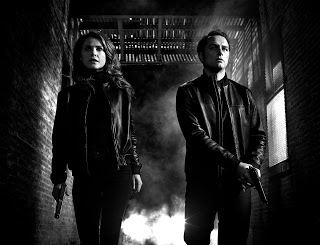 Keri Russell and Matthew Rhys in actionThe Americans:
Keri Russell and Matthew Rhys in actionThe Americans: A supreme spy thriller with evocative period touches [released on Jan. 30, 2013]
If ever a TV show can be described as a spy thriller of the highest order, this is it. Keri Russell and Matthew Rhys, a real-life married couple elevate the art of camouflage to creative perfection with ease, playing two KGB spies, Philip and Elizabeth Jennings, who pose as an American married couple living in the 1980s Washington D.C. Utterly believable, even likable, the multifaceted duo, presented on the show as heroes who are also villains compel viewers to confront one of TV’s deepest dilemmas—rooting for the baddie. A
 The duo as Philip & Elizabeth Jenningsheart-pounding action drama, the show has a snappy premise and the ingenuity of its underlying theme—Philip and Elizabeth as parents juggling their extraordinary mission with the ordinary reality of family life—is simply riveting. It makes for great television and realistic storytelling which tries and succeeds to not present any side as completely heroic or villainous. Also, the strong chemistry between the leads shines through the screen to a gleaming finish. It’s painful to see, though that in the end, stripped of all the disguises and forced to be themselves, they don’t know where to begin, and though they stand together, they seem oddly apart, looking back on a city that, to them is both home and foreign.
The duo as Philip & Elizabeth Jenningsheart-pounding action drama, the show has a snappy premise and the ingenuity of its underlying theme—Philip and Elizabeth as parents juggling their extraordinary mission with the ordinary reality of family life—is simply riveting. It makes for great television and realistic storytelling which tries and succeeds to not present any side as completely heroic or villainous. Also, the strong chemistry between the leads shines through the screen to a gleaming finish. It’s painful to see, though that in the end, stripped of all the disguises and forced to be themselves, they don’t know where to begin, and though they stand together, they seem oddly apart, looking back on a city that, to them is both home and foreign. 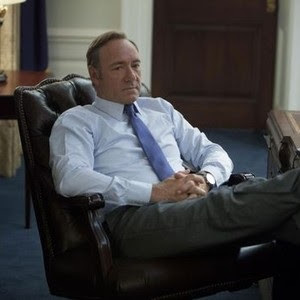 Kevin Spacey as Frank UnderwoodHouse of Cards:
Kevin Spacey as Frank UnderwoodHouse of Cards: A lush, acidic exploration of power in Washington [released on February 1, 2013]
If what the producers wanted was a political drama with plenty of shock value to force audiences to sit up and pay attention, that in fact, is what they got. A fictional foray into the world of political power struggles, this show, with its robust acting performances and engaging plots, is not only a breath of fresh air, it might also have redefined the genre. In this engrossing spectacle, Kevin Spacey as Frank Underwood, a Majority Whip cozened out of his dream job of Secretary of State and poised for revenge, gives his ‘all’ to the role and soars. Playing Claire Underwood, his wife, accomplice, and rival, Robin Wright soars along with him. Their gaping cynicism strikes a familiar chord in the audience considering current political realities in the country and against the backdrop of the ongoing real-life controversies in the White House. The sham duo, peeling away the layers of their political madness one step at a time and with delicate cruelty, know of every secret in politics and are hell-bent on betraying them all to attain the presidency. The show is an unusual take on politics. Not only are the performances pristine, but the production is also gorgeous, original, and boasts first-rate talents.
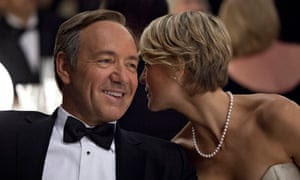 Kevin Spacey & Robin WrightIn the final season, sadly, Frank Underwood, one of the most legendary characters ever portrayed on a TV show is absent, and it’s a struggle for Claire alone to ride the unicycle and maintain the equilibrium. That’s because in past seasons, the Frank & Claire counterpoise balanced the intricacies of the show. But now, it’s Claire’s turn, and with her commanding presence, Robin Wright makes it count.
Kevin Spacey & Robin WrightIn the final season, sadly, Frank Underwood, one of the most legendary characters ever portrayed on a TV show is absent, and it’s a struggle for Claire alone to ride the unicycle and maintain the equilibrium. That’s because in past seasons, the Frank & Claire counterpoise balanced the intricacies of the show. But now, it’s Claire’s turn, and with her commanding presence, Robin Wright makes it count.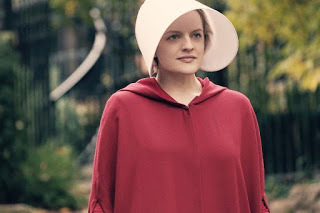 Elisabeth Moss as OffredHandmaid’s Tale:
Elisabeth Moss as OffredHandmaid’s Tale: A haunting & vivid depiction of a dystopian world [released on April 26, 2017]
Few TV shows have raised the bar for what the small screen can accomplish even in the middle of its golden era quite like this one. An engrossing adaptation of Margaret Atwood’s novel of the same title, the story is as significant today as it was during the era of Puritanism from which it drew its inspiration, and is difficult to watch but impossible to ignore. It details a
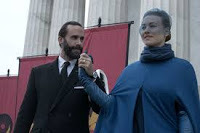 Joseph Fiennes & Yvonne Strahovski as
Joseph Fiennes & Yvonne Strahovski as Fred Waterford & Serena Joydystopian vision of the near future in which the United States becomes a fundamental theocracy based on the Bible and the few women whose fertility has not been compromised by environmental pollution are forced into sexual servitude for the purpose of childbearing. It is both chilling and terrific, and because of the current realities in the world, also timely; it would be understandable if its audience views it as cautionary. Elisabeth Moss as Offred, a fertile maiden assigned to Commander Fred Waterford and his wife, Serena Joy looms large on the screen in a blood-red robe and a white cap that partially conceals her face, putting her acting prowess on display in every scene.
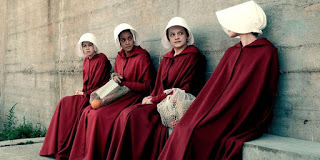 Offred with other handmaids
Offred with other handmaidsThe show, firmly anchored in her outstanding central performance, often takes the audience on a sadistic ride through her life in touching flashbacks as she, like all the other maidens, awaits her turn to be inseminated. A fictional tale steeped in realistic possibilities, the show is as brilliant as it is terrifying.
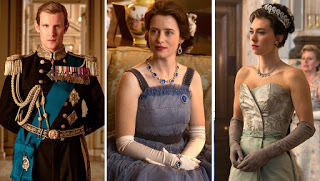 Matt Smith, Claire Foy, Vanessa KirbyThe Crown:
Matt Smith, Claire Foy, Vanessa KirbyThe Crown: A lavish reenactment of powerful historical affairs [released on November 4, 2016]
In this romanticized history of British royalty, a 25-year-old Princess, crowned Queen Elizabeth II is catapulted to global prominence. And, just like William Shakespeare said, “Uneasy lies the head that wears the crown,” she faces the daunting task of leading the world’s most renowned monarchy and forging a relationship with the domineering Prime Minister Winston Churchill. Not only was the first season of the show worthy of its grand subject, but in a way, it also felt like the TV equivalent of a long drive through the English countryside.
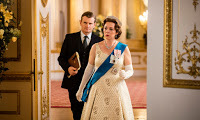 Olivia Coleman as Queen in Season 2In season two, though Olivia Coleman replaced Claire Foy as Queen Elizabeth II, the show remained a top-notch production with impeccable craftmanship, lavish cinematography, and sterling performances. Buttressed by verifiable historical facts and some of the century's most powerful events that still resonate today, The Crown ticks all the boxes of a royal classic.
Olivia Coleman as Queen in Season 2In season two, though Olivia Coleman replaced Claire Foy as Queen Elizabeth II, the show remained a top-notch production with impeccable craftmanship, lavish cinematography, and sterling performances. Buttressed by verifiable historical facts and some of the century's most powerful events that still resonate today, The Crown ticks all the boxes of a royal classic. Honorable Mentions
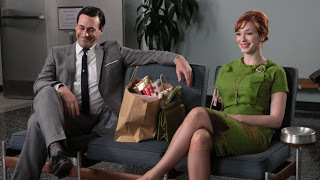 Jon Hamm & Christina Hendricks in Mad MenThe following gems should, because of their grandness make the cut, and although some of their seasons rolled into the 2010s, they can only make the honorable mentions lists because their original release pre-dated the decade in consideration.
Jon Hamm & Christina Hendricks in Mad MenThe following gems should, because of their grandness make the cut, and although some of their seasons rolled into the 2010s, they can only make the honorable mentions lists because their original release pre-dated the decade in consideration.Mad Men: released on July 19, 2007, was a fantastic show that felt like a photo spread of the early 1960s advertising world. Moving with a leisurely pace, its sly, subversive approach to the workplace muffled the undercurrent of disaffection by constantly radiating wit and class.
 Bryan Cranston and Aaron Paul in Breaking Bad
Bryan Cranston and Aaron Paul in Breaking Bad
Breaking Bad: released on January 20, 2008, was a darkly gripping crime thriller about a mild-mannered high school chemistry teacher who thought his life couldn't get any worse when he was diagnosed with cancer. With imagery that was often gruesome, it was a stimulating and unpredictable masterpiece with a strong sympathetic lead, superb writing and fabulous performances that made the TV audience craved for more.
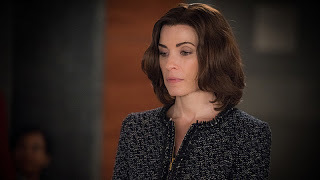 Julianna Margulies in The Good WifeThe Good Wife: released on September 22, 2009, was a savvy legal drama with a delightfully powerful mix of family drama and political intrigue. With a deft piece of legal work that put all its parts in excellent working condition, the show grew into an addictive masterpiece featuring majestic dialogue, intriguing surprises, and enjoyable performances, from the lawyers to the judges and to the family members.It's no surprise that some of these shows generated equally powerful spin-offs, like Better Call Saul, a pre-sequel of Breaking Bad, and The Good Fight, an off-shoot of The Good Wife.
Julianna Margulies in The Good WifeThe Good Wife: released on September 22, 2009, was a savvy legal drama with a delightfully powerful mix of family drama and political intrigue. With a deft piece of legal work that put all its parts in excellent working condition, the show grew into an addictive masterpiece featuring majestic dialogue, intriguing surprises, and enjoyable performances, from the lawyers to the judges and to the family members.It's no surprise that some of these shows generated equally powerful spin-offs, like Better Call Saul, a pre-sequel of Breaking Bad, and The Good Fight, an off-shoot of The Good Wife.
Published on January 06, 2020 07:27
December 29, 2019
Annus Horribilis
2019 - in Words & Pictures.

Unlike many years past, 2019 was a surprisingly shameless year, not so much because of the shocking and sometimes, inhuman things that happened. But because most of them played out in the streets and on live television and in blatant social media meltdowns. 2019 was the year that uncanny chain of events shoved the world to the brink, from deadliest natural disasters to wars & rumors of wars, to election chaos, to senseless trade wars, to fake news, and to the Brexit madness. It was a year that one could only count the positives on the fingers of one hand. Yet, beyond the turmoil, there were triumphs, like, for example, the U.S. Women World Cup win, and the huge number of women and minorities elected to the U.S. Congress which led to a spectacular takeover of the House of Representatives by Democrats.
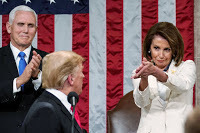 Nancy Pelosi at SOTU in FebruaryAnd the election of Nancy Pelosi, the first female speaker of the House, the most powerful woman in Washington D.C. For some, though the positive aspect ended there, for the win set the stage for a clash over congressional oversight powers. In the course of the year, the Robert Muller investigation into Russia's meddling in the 2016 elections came to an end with no satisfactory outcome for either side. Though Trump was not indicted for Obstruction of Justice, he was not outright exonerated, and some of his close associates went to jail.
Nancy Pelosi at SOTU in FebruaryAnd the election of Nancy Pelosi, the first female speaker of the House, the most powerful woman in Washington D.C. For some, though the positive aspect ended there, for the win set the stage for a clash over congressional oversight powers. In the course of the year, the Robert Muller investigation into Russia's meddling in the 2016 elections came to an end with no satisfactory outcome for either side. Though Trump was not indicted for Obstruction of Justice, he was not outright exonerated, and some of his close associates went to jail.
[image error] Clockwise from top left Kyrsten Sinema, Democrat
from Arizona; Alexandria Ocasio-Cortez, Democrat
from New York; Cathy McMorris Rodgers,
Republican from Washington; and Lauren Underwood,
Democrat from IllinoisImmigration was a thorny issue. Children were separated from their parents, with some held in what many described as cages. The dire situation led to one of the most haunting pictures of the year—an image of the lifeless bodies of Óscar Alberto Martinez Ramirez, his arm limply draped over his 23-month-old daughter, Angie Valeria, locked together on the banks of Rio Grande where they drowned trying to cross from Mexico into the United States.
In Britain, Prime Minister Theresa May bungled her way out of N° 10 Downing Street in tears over her headstrong and incompetent handling of the Brexit drama. On the other hand, her counterpart in the Labour Party, Jeremy Corbyn didn't fare any better. With no clear position on Brexit, and anti-semitic charges dogging his step, he sleepwalked into a national election on Brexit and spectacularly lost to Boris Johnson. He wasn't the only loser in Europe. The Megan Rapinoe with her teammates Samantha Mewis, left,
Megan Rapinoe with her teammates Samantha Mewis, left,
and Alex Morgan after scoring her team’s first goal in the World Cup final.vice-chancellor of Austria, Heinz-Christian Strache got entangled in a political scandal known as the Ibiza Affair and bowed out in disgrace. In Italy, the far-right Interior Minister, Matteo Salvini shot himself in the foot in a poorly orchestrated palace coup that ended up toppling him. Next door in France, the Yellow Vest's anti-government protests shook the political establishment and put the President, Emmanuel Macron on notice. In Asia, while the unyielding humanitarian crisis raged on in Yemen, protesters poured onto the wide boulevards of Hong Kong week after week. A subway fare increase in Chile led to protests in Santiago, and the tumult of mass gatherings, from Algeria to Sudan, from Bolivia to Venezuela, produced some of the most powerful images of the year.
A RECAP OF THE YEAR
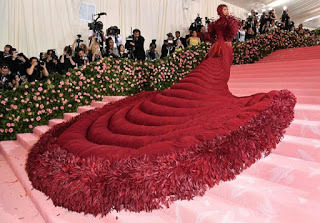 Cardi B at Met Gala Metropolitan Museum of Art on May 6, 2019,January: Women wielded power in the U.S. Congress
Cardi B at Met Gala Metropolitan Museum of Art on May 6, 2019,January: Women wielded power in the U.S. Congress
February: Nancy Pelosi's clap at the State of the Union went viral
March: A terrorist attack hit New Zealand
April: In Paris, the Notre Dame Cathedral went up in flames
May: Attorney General William Barr's congressional testimony set the stage for a confrontation
June: President Trump made history by crossing the demilitarized zone into North Korea
July: The U.S. Women soccer team clinched the World Cup
 Motorcyclists ride on a road as haze from
Motorcyclists ride on a road as haze from
wildfires blanket the city in Palembang, IndonesiaAugust: A horde of U.S. Democratic presidential hopefuls staggered into the open
September: Wildfires devastate the Amazon as Hurricane Dorian hit the Bahamas
October: ISIS kingpin, Abu Bakr al-Baghdadi was killed in Syria by U.S. special forces
November: The Chinese principle of one country, two systems tested its consistency in Hong Kong
December: Trump became the third U.S. President to be impeached
 Brentwood, California,In the midst of all these, fires burned, from Australia where more than 12 million acres and 1,000 homes were destroyed to California, where about $80 billion in damage and economic losses were estimated. Further, more than 80,000 forest fires ravaged the Amazon Forest, a huge carbon store considered a vital buffer for the world against climate change. The fires, accompanied by deforestation have had devastating effects on this important ecosystem. In Russia, hundreds of fires spread across Siberia, their proximity to cities like Novosibirsk and Krasnoyarsk marked as alarming. Air pollution put millions of people at risk in Indonesia as well, where the fires were particularly destructive. Schools were closed as smoke billowed out over Southeast Asia.
Brentwood, California,In the midst of all these, fires burned, from Australia where more than 12 million acres and 1,000 homes were destroyed to California, where about $80 billion in damage and economic losses were estimated. Further, more than 80,000 forest fires ravaged the Amazon Forest, a huge carbon store considered a vital buffer for the world against climate change. The fires, accompanied by deforestation have had devastating effects on this important ecosystem. In Russia, hundreds of fires spread across Siberia, their proximity to cities like Novosibirsk and Krasnoyarsk marked as alarming. Air pollution put millions of people at risk in Indonesia as well, where the fires were particularly destructive. Schools were closed as smoke billowed out over Southeast Asia.
NOTABLE DEATHS OF THE YEAR
 There were notable deaths in 2019, among them, Doris-Day, the legendary actress and singer who died at age 97 on May 13 after “contracting a serious case of pneumonia.” The fashion designer and mother of CNN anchorman, Anderson Cooper, Gloria-Vanderbilt, died at age 95 on June 17. Representative, Elijah E. Cummings who died on 17 October left a legacy as one of the most powerful Democrats in the U.S. Congress. Earlier, on July 9, the billionaire former presidential candidate, Henry Ross Perot died in his home in Dallas at age 89. Seven days later, on July 16, the retired Supreme Court Justice John Paul Stevens who served on the court from 1975 to 2010 died at age 99. Less than a month later, the celebrated Nobel Prize winner, Toni Morrison died at age 88 on August 5. Soon afterward, Peter Fonda, the Easy Rider star died at his Los Angeles home at 79
There were notable deaths in 2019, among them, Doris-Day, the legendary actress and singer who died at age 97 on May 13 after “contracting a serious case of pneumonia.” The fashion designer and mother of CNN anchorman, Anderson Cooper, Gloria-Vanderbilt, died at age 95 on June 17. Representative, Elijah E. Cummings who died on 17 October left a legacy as one of the most powerful Democrats in the U.S. Congress. Earlier, on July 9, the billionaire former presidential candidate, Henry Ross Perot died in his home in Dallas at age 89. Seven days later, on July 16, the retired Supreme Court Justice John Paul Stevens who served on the court from 1975 to 2010 died at age 99. Less than a month later, the celebrated Nobel Prize winner, Toni Morrison died at age 88 on August 5. Soon afterward, Peter Fonda, the Easy Rider star died at his Los Angeles home at 79
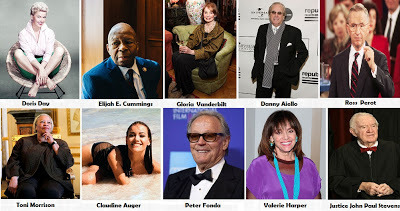 on August 16, followed, 14 days later by Valerie Harper, the Mary Tyler Moore star who died at age 80 on August 30. In the last month of the year, the first French Bond girl, Claudine Augur, who starred alongside Sean Connery in Thunderball died at age 78 in Paris. Then on December 12, after a brief illness, another well-known name, Danny Aiello who starred in movies including The Godfather Part ll, Moonstruck, and Do the Right Thing died at age 86.
on August 16, followed, 14 days later by Valerie Harper, the Mary Tyler Moore star who died at age 80 on August 30. In the last month of the year, the first French Bond girl, Claudine Augur, who starred alongside Sean Connery in Thunderball died at age 78 in Paris. Then on December 12, after a brief illness, another well-known name, Danny Aiello who starred in movies including The Godfather Part ll, Moonstruck, and Do the Right Thing died at age 86.

Unlike many years past, 2019 was a surprisingly shameless year, not so much because of the shocking and sometimes, inhuman things that happened. But because most of them played out in the streets and on live television and in blatant social media meltdowns. 2019 was the year that uncanny chain of events shoved the world to the brink, from deadliest natural disasters to wars & rumors of wars, to election chaos, to senseless trade wars, to fake news, and to the Brexit madness. It was a year that one could only count the positives on the fingers of one hand. Yet, beyond the turmoil, there were triumphs, like, for example, the U.S. Women World Cup win, and the huge number of women and minorities elected to the U.S. Congress which led to a spectacular takeover of the House of Representatives by Democrats.
 Nancy Pelosi at SOTU in FebruaryAnd the election of Nancy Pelosi, the first female speaker of the House, the most powerful woman in Washington D.C. For some, though the positive aspect ended there, for the win set the stage for a clash over congressional oversight powers. In the course of the year, the Robert Muller investigation into Russia's meddling in the 2016 elections came to an end with no satisfactory outcome for either side. Though Trump was not indicted for Obstruction of Justice, he was not outright exonerated, and some of his close associates went to jail.
Nancy Pelosi at SOTU in FebruaryAnd the election of Nancy Pelosi, the first female speaker of the House, the most powerful woman in Washington D.C. For some, though the positive aspect ended there, for the win set the stage for a clash over congressional oversight powers. In the course of the year, the Robert Muller investigation into Russia's meddling in the 2016 elections came to an end with no satisfactory outcome for either side. Though Trump was not indicted for Obstruction of Justice, he was not outright exonerated, and some of his close associates went to jail.[image error] Clockwise from top left Kyrsten Sinema, Democrat
from Arizona; Alexandria Ocasio-Cortez, Democrat
from New York; Cathy McMorris Rodgers,
Republican from Washington; and Lauren Underwood,
Democrat from IllinoisImmigration was a thorny issue. Children were separated from their parents, with some held in what many described as cages. The dire situation led to one of the most haunting pictures of the year—an image of the lifeless bodies of Óscar Alberto Martinez Ramirez, his arm limply draped over his 23-month-old daughter, Angie Valeria, locked together on the banks of Rio Grande where they drowned trying to cross from Mexico into the United States.
In Britain, Prime Minister Theresa May bungled her way out of N° 10 Downing Street in tears over her headstrong and incompetent handling of the Brexit drama. On the other hand, her counterpart in the Labour Party, Jeremy Corbyn didn't fare any better. With no clear position on Brexit, and anti-semitic charges dogging his step, he sleepwalked into a national election on Brexit and spectacularly lost to Boris Johnson. He wasn't the only loser in Europe. The
 Megan Rapinoe with her teammates Samantha Mewis, left,
Megan Rapinoe with her teammates Samantha Mewis, left, and Alex Morgan after scoring her team’s first goal in the World Cup final.vice-chancellor of Austria, Heinz-Christian Strache got entangled in a political scandal known as the Ibiza Affair and bowed out in disgrace. In Italy, the far-right Interior Minister, Matteo Salvini shot himself in the foot in a poorly orchestrated palace coup that ended up toppling him. Next door in France, the Yellow Vest's anti-government protests shook the political establishment and put the President, Emmanuel Macron on notice. In Asia, while the unyielding humanitarian crisis raged on in Yemen, protesters poured onto the wide boulevards of Hong Kong week after week. A subway fare increase in Chile led to protests in Santiago, and the tumult of mass gatherings, from Algeria to Sudan, from Bolivia to Venezuela, produced some of the most powerful images of the year.
A RECAP OF THE YEAR
 Cardi B at Met Gala Metropolitan Museum of Art on May 6, 2019,January: Women wielded power in the U.S. Congress
Cardi B at Met Gala Metropolitan Museum of Art on May 6, 2019,January: Women wielded power in the U.S. CongressFebruary: Nancy Pelosi's clap at the State of the Union went viral
March: A terrorist attack hit New Zealand
April: In Paris, the Notre Dame Cathedral went up in flames
May: Attorney General William Barr's congressional testimony set the stage for a confrontation
June: President Trump made history by crossing the demilitarized zone into North Korea
July: The U.S. Women soccer team clinched the World Cup
 Motorcyclists ride on a road as haze from
Motorcyclists ride on a road as haze from wildfires blanket the city in Palembang, IndonesiaAugust: A horde of U.S. Democratic presidential hopefuls staggered into the open
September: Wildfires devastate the Amazon as Hurricane Dorian hit the Bahamas
October: ISIS kingpin, Abu Bakr al-Baghdadi was killed in Syria by U.S. special forces
November: The Chinese principle of one country, two systems tested its consistency in Hong Kong
December: Trump became the third U.S. President to be impeached
 Brentwood, California,In the midst of all these, fires burned, from Australia where more than 12 million acres and 1,000 homes were destroyed to California, where about $80 billion in damage and economic losses were estimated. Further, more than 80,000 forest fires ravaged the Amazon Forest, a huge carbon store considered a vital buffer for the world against climate change. The fires, accompanied by deforestation have had devastating effects on this important ecosystem. In Russia, hundreds of fires spread across Siberia, their proximity to cities like Novosibirsk and Krasnoyarsk marked as alarming. Air pollution put millions of people at risk in Indonesia as well, where the fires were particularly destructive. Schools were closed as smoke billowed out over Southeast Asia.
Brentwood, California,In the midst of all these, fires burned, from Australia where more than 12 million acres and 1,000 homes were destroyed to California, where about $80 billion in damage and economic losses were estimated. Further, more than 80,000 forest fires ravaged the Amazon Forest, a huge carbon store considered a vital buffer for the world against climate change. The fires, accompanied by deforestation have had devastating effects on this important ecosystem. In Russia, hundreds of fires spread across Siberia, their proximity to cities like Novosibirsk and Krasnoyarsk marked as alarming. Air pollution put millions of people at risk in Indonesia as well, where the fires were particularly destructive. Schools were closed as smoke billowed out over Southeast Asia. NOTABLE DEATHS OF THE YEAR
 There were notable deaths in 2019, among them, Doris-Day, the legendary actress and singer who died at age 97 on May 13 after “contracting a serious case of pneumonia.” The fashion designer and mother of CNN anchorman, Anderson Cooper, Gloria-Vanderbilt, died at age 95 on June 17. Representative, Elijah E. Cummings who died on 17 October left a legacy as one of the most powerful Democrats in the U.S. Congress. Earlier, on July 9, the billionaire former presidential candidate, Henry Ross Perot died in his home in Dallas at age 89. Seven days later, on July 16, the retired Supreme Court Justice John Paul Stevens who served on the court from 1975 to 2010 died at age 99. Less than a month later, the celebrated Nobel Prize winner, Toni Morrison died at age 88 on August 5. Soon afterward, Peter Fonda, the Easy Rider star died at his Los Angeles home at 79
There were notable deaths in 2019, among them, Doris-Day, the legendary actress and singer who died at age 97 on May 13 after “contracting a serious case of pneumonia.” The fashion designer and mother of CNN anchorman, Anderson Cooper, Gloria-Vanderbilt, died at age 95 on June 17. Representative, Elijah E. Cummings who died on 17 October left a legacy as one of the most powerful Democrats in the U.S. Congress. Earlier, on July 9, the billionaire former presidential candidate, Henry Ross Perot died in his home in Dallas at age 89. Seven days later, on July 16, the retired Supreme Court Justice John Paul Stevens who served on the court from 1975 to 2010 died at age 99. Less than a month later, the celebrated Nobel Prize winner, Toni Morrison died at age 88 on August 5. Soon afterward, Peter Fonda, the Easy Rider star died at his Los Angeles home at 79
 on August 16, followed, 14 days later by Valerie Harper, the Mary Tyler Moore star who died at age 80 on August 30. In the last month of the year, the first French Bond girl, Claudine Augur, who starred alongside Sean Connery in Thunderball died at age 78 in Paris. Then on December 12, after a brief illness, another well-known name, Danny Aiello who starred in movies including The Godfather Part ll, Moonstruck, and Do the Right Thing died at age 86.
on August 16, followed, 14 days later by Valerie Harper, the Mary Tyler Moore star who died at age 80 on August 30. In the last month of the year, the first French Bond girl, Claudine Augur, who starred alongside Sean Connery in Thunderball died at age 78 in Paris. Then on December 12, after a brief illness, another well-known name, Danny Aiello who starred in movies including The Godfather Part ll, Moonstruck, and Do the Right Thing died at age 86.
Published on December 29, 2019 03:00
November 3, 2019
The Art of Storytelling
 Mastering The Art Of Storytelling In Ten Steps
Mastering The Art Of Storytelling In Ten Steps“The principle of true art is not to portray, but to evoke.”
~ Jerzy Kosinski
We all have a story to tell is a maxim everyone agrees with. Interestingly, we also all love stories. A good story can convey a life-changing message, entertain us in unimaginable ways, and even ignite a fire within us. As the author, Vera Nazarian puts it, “The world is shaped by two things—stories told and the memories they leave behind.”
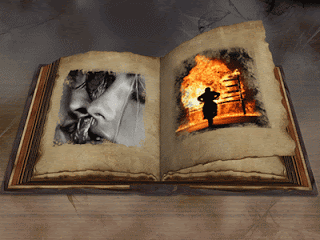 However, for a story to have the impact described above, it must be told properly. In nearly every society, storytelling is associated with the social or cultural pastime of sharing anecdotes, myths, and folktales. It is used invariably as a means of cultural preservation, education, entertainment or even instilling moral values, and it is not uncommon for it to be accompanied by embellishments, theatrics, and sometimes improvisation. In modern society, the art of storytelling can be complex and frustrating for many aspiring writers. These tips might help:
However, for a story to have the impact described above, it must be told properly. In nearly every society, storytelling is associated with the social or cultural pastime of sharing anecdotes, myths, and folktales. It is used invariably as a means of cultural preservation, education, entertainment or even instilling moral values, and it is not uncommon for it to be accompanied by embellishments, theatrics, and sometimes improvisation. In modern society, the art of storytelling can be complex and frustrating for many aspiring writers. These tips might help: (1) Know Your Audience
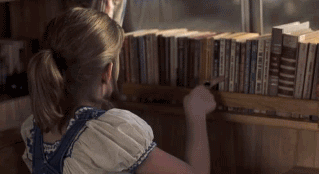 If a school commissions you to teach a class, the students you have in front of you would determine your lesson, wouldn’t they? Are they kindergarten kids or young adults or grownups? You would undoubtedly tailor your lesson towards the specific demographic the school commissioned you to teach. It’s the same with storytelling, that’s why knowing your audience is the first step towards the process. That knowledge determines not just the length and content of the story but the expression used. It is therefore crucial that before beginning a story, an aspiring writer spends some time considering who he/she is targeting. One way to do that is to pinpoint something special in the story to narrow it down to a specific group - is it a love story? Is this love story about a specific demographic? Is it a fit for a certain age or interest group? So, being able to isolate types or groups of people that the story would appeal to is fundamental. It is also important to check out published books comparable to your story and find out who the book’s audience is.
If a school commissions you to teach a class, the students you have in front of you would determine your lesson, wouldn’t they? Are they kindergarten kids or young adults or grownups? You would undoubtedly tailor your lesson towards the specific demographic the school commissioned you to teach. It’s the same with storytelling, that’s why knowing your audience is the first step towards the process. That knowledge determines not just the length and content of the story but the expression used. It is therefore crucial that before beginning a story, an aspiring writer spends some time considering who he/she is targeting. One way to do that is to pinpoint something special in the story to narrow it down to a specific group - is it a love story? Is this love story about a specific demographic? Is it a fit for a certain age or interest group? So, being able to isolate types or groups of people that the story would appeal to is fundamental. It is also important to check out published books comparable to your story and find out who the book’s audience is. (2) Make Them care
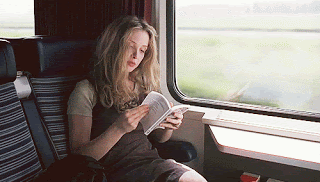 Why should a reader be interested in your story? How is it relevant to him/her? This is one of the important aspects of storytelling that an aspiring writer should consider. It is fundamental that the writer makes that clear in his/her mind because if it’s not clear to you, it certainly won’t be clear to the reader. Keep in mind that caring doesn’t come by design, you must cultivate it. Just like a filmmaker, the writer must create something that draws attention, like the background music in a film, the romantic element in a tale, or the fear factor in a narrative. He/she should create what some call an itch which could be a particular trait in the protagonist that becomes a defining characteristic, like daddy issues, low or high self-esteem, being a workaholic or a control freak. That way, the writer invokes a common emotional element or a dilemma that the target audience can somehow identify with. A good story should, therefore, have a certain element of reality that makes it possible for readers to relate to even if they haven’t had that particular experience. So, emotionally or intellectually or even aesthetically, the aspiring writer, in crafting his/her story, must make it interesting enough for the reader to care.
Why should a reader be interested in your story? How is it relevant to him/her? This is one of the important aspects of storytelling that an aspiring writer should consider. It is fundamental that the writer makes that clear in his/her mind because if it’s not clear to you, it certainly won’t be clear to the reader. Keep in mind that caring doesn’t come by design, you must cultivate it. Just like a filmmaker, the writer must create something that draws attention, like the background music in a film, the romantic element in a tale, or the fear factor in a narrative. He/she should create what some call an itch which could be a particular trait in the protagonist that becomes a defining characteristic, like daddy issues, low or high self-esteem, being a workaholic or a control freak. That way, the writer invokes a common emotional element or a dilemma that the target audience can somehow identify with. A good story should, therefore, have a certain element of reality that makes it possible for readers to relate to even if they haven’t had that particular experience. So, emotionally or intellectually or even aesthetically, the aspiring writer, in crafting his/her story, must make it interesting enough for the reader to care.(3) Set The Scene
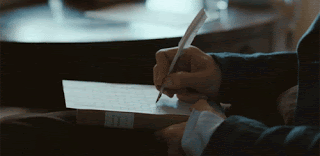 The context in which words appear and scenes develop generally affects a story, and that’s because people experience the world through their senses. Therefore, for a story to captivate an audience, the writer must set the scene and provide them with a context for the account. Where, for example, did the story take place? When did it begin? What was the atmosphere like? What triggered it? Who are the key players? These are a few of the questions which answers can help set the scene, engaging the senses of readers by offering them a more immersive experience. It is called ‘painting the picture.’ One thing that can help a writer start the process is to identify the purpose of the story and the high moment in the tale. It is equally important to determine what is at stake for the protagonist and other characters in the story and to emphasize conflict, both internal and external. Another key point is to highlight character change, making sure not to lose the reader as you illustrate how the events change the players. As the scene unfolds, the reader should be able to determine who has the most to lose/gain in the story. Whose emotional reaction will be the strongest? Which character will change the most and how will that change or reaction impact the plot?
The context in which words appear and scenes develop generally affects a story, and that’s because people experience the world through their senses. Therefore, for a story to captivate an audience, the writer must set the scene and provide them with a context for the account. Where, for example, did the story take place? When did it begin? What was the atmosphere like? What triggered it? Who are the key players? These are a few of the questions which answers can help set the scene, engaging the senses of readers by offering them a more immersive experience. It is called ‘painting the picture.’ One thing that can help a writer start the process is to identify the purpose of the story and the high moment in the tale. It is equally important to determine what is at stake for the protagonist and other characters in the story and to emphasize conflict, both internal and external. Another key point is to highlight character change, making sure not to lose the reader as you illustrate how the events change the players. As the scene unfolds, the reader should be able to determine who has the most to lose/gain in the story. Whose emotional reaction will be the strongest? Which character will change the most and how will that change or reaction impact the plot? (4) Use Chronology
 A story should have a beginning, a middle, and an ending. Once you understand this basic tenet of storytelling, you may choose to abandon the conventions of normal chronology and opt for a creative one, like hurling the reader straight into the midst of the action, or to the end of the story to catch their attention. Done creatively, this can arouse the curiosity of the reader, generate unexpected suspense, or create a searing tension that keeps the reader glued to the pages. Once a reader identifies who to root for, he/she will become invested in the story and a desire to know what might happen next will be one of the easiest ways to keep them reading, if nothing else, to find out how the writer intends to bring together the missing pieces of the puzzle. So, while keeping faith with the basic tenet of a story having a beginning, a middle, and ending, the writer can choose, with ample creative liberty, how to present the sequence of events in order of timing in a way that the reader can follow.
A story should have a beginning, a middle, and an ending. Once you understand this basic tenet of storytelling, you may choose to abandon the conventions of normal chronology and opt for a creative one, like hurling the reader straight into the midst of the action, or to the end of the story to catch their attention. Done creatively, this can arouse the curiosity of the reader, generate unexpected suspense, or create a searing tension that keeps the reader glued to the pages. Once a reader identifies who to root for, he/she will become invested in the story and a desire to know what might happen next will be one of the easiest ways to keep them reading, if nothing else, to find out how the writer intends to bring together the missing pieces of the puzzle. So, while keeping faith with the basic tenet of a story having a beginning, a middle, and ending, the writer can choose, with ample creative liberty, how to present the sequence of events in order of timing in a way that the reader can follow.(5) Create a Punch line
 In a comedy set, a punch line is the climactic conclusion of a joke that makes an audience laugh; usually, it is a short line that delivers a humorous reveal, mainly because it is the opposite of what the audience expects. In storytelling, punch lines should follow the same pattern. As explained earlier, a story generally has a beginning, a middle, and an ending; therefore, as in comedy, a punch line in storytelling should follow the introductory framing of the tale, the development of the scenes, and the narrative that sets it up. But unlike comedy, it doesn’t necessarily have to aim at eliciting laughter from the audience unless it’s a humor book, rather it should aim at delivering a dramatic reveal or what is known as a twist in the tale. A punch line can also be poetic, inspirational, or a romantic reveal. While the appeal of some stories may not depend on punch lines, the writer should never lose sight of the purpose of telling the story and must employ all the tools in his/her creative arsenal to make the story interesting and relevant.
In a comedy set, a punch line is the climactic conclusion of a joke that makes an audience laugh; usually, it is a short line that delivers a humorous reveal, mainly because it is the opposite of what the audience expects. In storytelling, punch lines should follow the same pattern. As explained earlier, a story generally has a beginning, a middle, and an ending; therefore, as in comedy, a punch line in storytelling should follow the introductory framing of the tale, the development of the scenes, and the narrative that sets it up. But unlike comedy, it doesn’t necessarily have to aim at eliciting laughter from the audience unless it’s a humor book, rather it should aim at delivering a dramatic reveal or what is known as a twist in the tale. A punch line can also be poetic, inspirational, or a romantic reveal. While the appeal of some stories may not depend on punch lines, the writer should never lose sight of the purpose of telling the story and must employ all the tools in his/her creative arsenal to make the story interesting and relevant. (6) Don’t Tell The Reader, Show Him
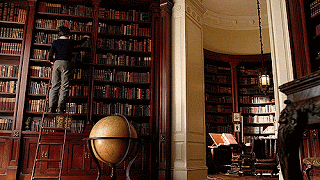 There is an invisible border between your story and the reader; it is in engaging the reader that that boundary is erased. The best way to engage the reader is to invoke as many of the five senses as possible—seeing, hearing, smelling, touching, and tasting—in the story. The reader automatically becomes a participant in the adventure if the story engages his/her emotions, if he/she can identify with the characters, fears for the life of the characters, or loves or hates a particular character enough to desire a certain outcome for them. A writer won’t achieve that by telling the reader what is happening. He/she would achieve it by showing the reader what is happening. As the famous Russian playwright, Anton Chekhov puts it, “Don’t tell me the moon is shining; show me the glint of light on broken glass.”Indeed, when you show the reader what is happening rather than tell him, you engage him, and by engaging him you make him a participant in the adventure. So, rather than having everything imparted to him, the reader can see the events in his mind and then comes to the conclusions you want.
There is an invisible border between your story and the reader; it is in engaging the reader that that boundary is erased. The best way to engage the reader is to invoke as many of the five senses as possible—seeing, hearing, smelling, touching, and tasting—in the story. The reader automatically becomes a participant in the adventure if the story engages his/her emotions, if he/she can identify with the characters, fears for the life of the characters, or loves or hates a particular character enough to desire a certain outcome for them. A writer won’t achieve that by telling the reader what is happening. He/she would achieve it by showing the reader what is happening. As the famous Russian playwright, Anton Chekhov puts it, “Don’t tell me the moon is shining; show me the glint of light on broken glass.”Indeed, when you show the reader what is happening rather than tell him, you engage him, and by engaging him you make him a participant in the adventure. So, rather than having everything imparted to him, the reader can see the events in his mind and then comes to the conclusions you want. (7) Incorporate Tension Into Your Writing
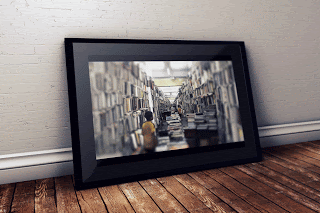 Tension is the principal reason we describe some books as page-turners. If you’ve ever read a story so intense that you forget about time and feel compelled to continue reading until you finished, then you understand the value of introducing tension into your writing. One way to do that is by getting your readers attached, not only to the plot but also to your main characters. By heightening the stakes and creating character conflict, you get your readers invested in the story. It is therefore not an exaggeration to say that clever use of tension in storytelling is one of the most effective ways of rendering a story irresistible and a book ‘unputdownable.’ By introducing exponential tension into your writing and timing the tension effectively, you engage the reader, and by engaging him/her, you erase that invisible boundary between your story and its audience. Another method of incorporating tension into your writing and getting the reader flipping the pages is using cliffhangers that leave the audience in suspense, making them yearn to know what will happen next. While it is okay for suspense to permeate the pages, cliffhangers, however, should be abrupt and should come at the end of the plot. Cliffhangers are particularly effective in books that have a sequel, but it can also be a great strategy for stand-alone books.
Tension is the principal reason we describe some books as page-turners. If you’ve ever read a story so intense that you forget about time and feel compelled to continue reading until you finished, then you understand the value of introducing tension into your writing. One way to do that is by getting your readers attached, not only to the plot but also to your main characters. By heightening the stakes and creating character conflict, you get your readers invested in the story. It is therefore not an exaggeration to say that clever use of tension in storytelling is one of the most effective ways of rendering a story irresistible and a book ‘unputdownable.’ By introducing exponential tension into your writing and timing the tension effectively, you engage the reader, and by engaging him/her, you erase that invisible boundary between your story and its audience. Another method of incorporating tension into your writing and getting the reader flipping the pages is using cliffhangers that leave the audience in suspense, making them yearn to know what will happen next. While it is okay for suspense to permeate the pages, cliffhangers, however, should be abrupt and should come at the end of the plot. Cliffhangers are particularly effective in books that have a sequel, but it can also be a great strategy for stand-alone books. (8) End With A Bang
 As in films and theatrical performances, a grand finale in storytelling keeps readers thinking or even talking about the book long after they’ve finished reading it. Whatever the plot development, whatever tension or suspense that builds up in the story, the resolution should not be slow in coming. If for reasons of a possible sequel, the writer does not want to end with a cliffhanger, he/she should ensure that there’s closure in the story by resolving the plot and leaving no questions hanging in the air. For stand-alone novels that end with a cliffhanger, the writer should add some creative magic to the story in a way that leaves the reader with a sense of awe, like the feeling one gets when leaving the cinema after watching a great motion picture or the theater after watching a great production. The writer can achieve this by leaving his/her readers with a ‘big puzzle’ to solve in their minds or with a profound take on life, on humanity or the theme of the story.
As in films and theatrical performances, a grand finale in storytelling keeps readers thinking or even talking about the book long after they’ve finished reading it. Whatever the plot development, whatever tension or suspense that builds up in the story, the resolution should not be slow in coming. If for reasons of a possible sequel, the writer does not want to end with a cliffhanger, he/she should ensure that there’s closure in the story by resolving the plot and leaving no questions hanging in the air. For stand-alone novels that end with a cliffhanger, the writer should add some creative magic to the story in a way that leaves the reader with a sense of awe, like the feeling one gets when leaving the cinema after watching a great motion picture or the theater after watching a great production. The writer can achieve this by leaving his/her readers with a ‘big puzzle’ to solve in their minds or with a profound take on life, on humanity or the theme of the story.(9) Paint A Picture
 The hardest part of writing is the presentation, and a good presentation requires clever use of words. It is not enough for writers to construct the whole story in their heads, they must be able to present it in a way that makes sense, not only to them but to the reader too. In view of that, it might seem as if the easiest part of the process is the story’s conception. For those with a fertile imagination, it certainly is, after all, that’s what distinguishes a creative mind from a non-creative one. But storytelling, for a writer, must show elements of craftsmanship and finesse. A picture, according to an English adage, is worth a thousand words, which is a notion that just a single picture can convey some complex ideas. So, unless a writer is presenting a picture book, he/she must paint the picture with words to make the reader see and hear and smell and touch and taste whatever he/she puts out. It is the writer’s descriptive power that takes the reader on a journey that gets him/her invested in the story and makes him/her feel what the characters are feeling, forcing him/her to partake in whatever dilemma the characters are facing. As a writer, you have no other weapon but words, so don’t limit yourself in deploying them.
The hardest part of writing is the presentation, and a good presentation requires clever use of words. It is not enough for writers to construct the whole story in their heads, they must be able to present it in a way that makes sense, not only to them but to the reader too. In view of that, it might seem as if the easiest part of the process is the story’s conception. For those with a fertile imagination, it certainly is, after all, that’s what distinguishes a creative mind from a non-creative one. But storytelling, for a writer, must show elements of craftsmanship and finesse. A picture, according to an English adage, is worth a thousand words, which is a notion that just a single picture can convey some complex ideas. So, unless a writer is presenting a picture book, he/she must paint the picture with words to make the reader see and hear and smell and touch and taste whatever he/she puts out. It is the writer’s descriptive power that takes the reader on a journey that gets him/her invested in the story and makes him/her feel what the characters are feeling, forcing him/her to partake in whatever dilemma the characters are facing. As a writer, you have no other weapon but words, so don’t limit yourself in deploying them. (10) Have Fun With It
 Often in interviews, writers are asked, why do you write? The answer may differ from one person to another, but the cardinal point in writing is to ‘get something off your chest.’ Writers, like most people, are often plagued by convoluted thoughts, mental burdens, and ideas that they find difficult to shake off. Writing provides them the ultimate release. So, while you are at it, why not have fun with it? First, though, to enjoy the process, you must have something to say. Not everything that goes through the mind ought to end up as a book because a written work should have a keen aesthetic sense. It should be distinguished as a literary culture of value. If you have something to say, if you have a unique story to tell and have the words with which to tell it, if you create a wonderful world for others to enjoy, you might as well relish the experience. Cultivate a sense of purpose, develop a creative mindset, view challenges as opportunities. Read, read, read, it’ll give you the tools you need. And, above all, enjoy the process.
Often in interviews, writers are asked, why do you write? The answer may differ from one person to another, but the cardinal point in writing is to ‘get something off your chest.’ Writers, like most people, are often plagued by convoluted thoughts, mental burdens, and ideas that they find difficult to shake off. Writing provides them the ultimate release. So, while you are at it, why not have fun with it? First, though, to enjoy the process, you must have something to say. Not everything that goes through the mind ought to end up as a book because a written work should have a keen aesthetic sense. It should be distinguished as a literary culture of value. If you have something to say, if you have a unique story to tell and have the words with which to tell it, if you create a wonderful world for others to enjoy, you might as well relish the experience. Cultivate a sense of purpose, develop a creative mindset, view challenges as opportunities. Read, read, read, it’ll give you the tools you need. And, above all, enjoy the process.
Published on November 03, 2019 07:05
October 13, 2019
Creative Writing - Challenges & Drawbacks
The Downside of Studying Creative Writing
/ KRISTINA ADAMS /I studied Creative Writing for my undergraduate degree and continued studying it into my postgraduate degree. I am proud of my degrees and I enjoyed studying the process of writing, but as with everything, there are downsides to studying Creative Writing. Studying Creative Writing isn’t as simple as writing a story and getting a grade for it. Pieces are marked on their originality, their use, and control of language, and your ability to explain your writing process. You must approach your writing from an academic perspective whilst maintaining the creativity that you need to carve a piece out of a blank piece of paper (or screen). Studying Creative Writing is not a walk in the park, nor is it for people who class Fifty Shades of Grey as the greatest book ever written.It Can Take the Pleasure Out of Reading
Studying Creative Writing isn’t as simple as writing a story and getting a grade for it. Pieces are marked on their originality, their use, and control of language, and your ability to explain your writing process. You must approach your writing from an academic perspective whilst maintaining the creativity that you need to carve a piece out of a blank piece of paper (or screen). Studying Creative Writing is not a walk in the park, nor is it for people who class Fifty Shades of Grey as the greatest book ever written.It Can Take the Pleasure Out of Reading
 Once you know the technical rules of writing, it becomes hard to sit and enjoy a book — particular a mainstream one that was written/bought for the sake of profit, not because of its quality. The rules that you’ve learned studying Creative Writing will make it difficult for you to switch off your editor mode, meaning that unless a book is incredibly well written, you won’t be able to help but dissect it.Some courses also contain Literature modules — you can also study Creative Writing with Literature — and those modules are often compulsory. It is impossible to study writing and not change the way that you approach reading particularly once you have begun to workshop.
Once you know the technical rules of writing, it becomes hard to sit and enjoy a book — particular a mainstream one that was written/bought for the sake of profit, not because of its quality. The rules that you’ve learned studying Creative Writing will make it difficult for you to switch off your editor mode, meaning that unless a book is incredibly well written, you won’t be able to help but dissect it.Some courses also contain Literature modules — you can also study Creative Writing with Literature — and those modules are often compulsory. It is impossible to study writing and not change the way that you approach reading particularly once you have begun to workshop.
It Can Take the Pleasure Out of WritingBefore studying writing, Meg Cabot was warned that it would take the fun out of it for her. You have to really love writing to study it. Not only that, but you have to make sure to study the right kind of writing for you — if you’re a poet and you don’t feel comfortable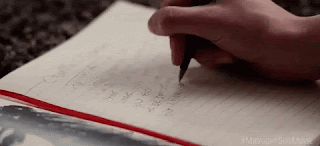 "There are really only two reasons to write: desperation or revenge."
"There are really only two reasons to write: desperation or revenge."
~ Elizabeth Hardwickwriting short stories, make sure to go somewhere that you can focus on poetry and won’t be forced to write things that you’re uncomfortable with. It’s good to experiment, but if you already know which area(s) you enjoy writing the most, don’t study the areas you enjoy less — you’ll go from less fun to no fun.The more we’re forced to do something, the harder it is for us to enjoy it: our appetite for it can become saturated to the point where it’s no longer fun. If you’re worried about this happening to you, think about how you approach writing. Do you do it for fun? Is it a hobby for you, or is it your life? If you approach everything in life and think about what angle you could approach it from were it a piece of fiction or a poem, or you carry a notebook around for ideas, studying Creative Writing may well be for you.Commentaries Speak to anyone that’s studied or is studying Creative Writing, and most — if not all — will go off on a five-minute rant about how annoying commentaries are.Commentaries go hand-in-hand with studying Creative Writing and often amount to 50% — possibly even more — of a grade. They are just as important as your creative work, sometimes even more. In commentaries, you have to justify why you’ve made certain creative decisions, referencing theories that back up your choices.Commentaries are an entirely different skill to creative work. They’re much closer to essay writing than short stories, scripts or poetry. If you’re planning on doing any form of degree in Creative Writing, writing commentaries will be mandatory and will go with most pieces of creative work that you submit. If you’re not comfortable writing essays, I would seriously think before deciding to study Creative Writing.
Speak to anyone that’s studied or is studying Creative Writing, and most — if not all — will go off on a five-minute rant about how annoying commentaries are.Commentaries go hand-in-hand with studying Creative Writing and often amount to 50% — possibly even more — of a grade. They are just as important as your creative work, sometimes even more. In commentaries, you have to justify why you’ve made certain creative decisions, referencing theories that back up your choices.Commentaries are an entirely different skill to creative work. They’re much closer to essay writing than short stories, scripts or poetry. If you’re planning on doing any form of degree in Creative Writing, writing commentaries will be mandatory and will go with most pieces of creative work that you submit. If you’re not comfortable writing essays, I would seriously think before deciding to study Creative Writing.
WorkshoppingWorkshopping is one of those things that you either enjoy or you don’t. Many people — particularly if they’re new to writing — dread them. They’re intimidating environments, particularly if some or all of the people you’re workshopping with have more experience in writing than you do.
particularly if some or all of the people you’re workshopping with have more experience in writing than you do.
Writing is seen as a solitary craft, and the initial process is, but if you wish to improve, it is necessary to workshop, and workshop as much as you possibly can. The more people you workshop your work with, the more perspectives you’ll get. The more perspectives you get, the more likely you are to find things to change or to find out how people interpret your work (and it may not be how you intended).If you don’t enjoy group work, workshops can be difficult. Likewise, it might be the way that the workshop is led that you’re uncomfortable with. There are many ways to lead a workshop, and many ways to give and receive feedback. How it’s done will depend on where you study, who your teachers are, and what your peers are like.Some Teaching Methods The place that you choose to study Creative Writing will have a huge impact on you. Some of it will be conscious, some of it won’t be. Some places are much more involved in the local — and wider — literary community, and those places are where you want to go because it will help you long-term as well as short-term.Like with everything we study, how something is taught to us can and will affect our opinion and approach. Do your research on where you want to study before you decide, because some places have a focus on certain areas such as fiction, whereas others will be more diverse.Conclusion
The place that you choose to study Creative Writing will have a huge impact on you. Some of it will be conscious, some of it won’t be. Some places are much more involved in the local — and wider — literary community, and those places are where you want to go because it will help you long-term as well as short-term.Like with everything we study, how something is taught to us can and will affect our opinion and approach. Do your research on where you want to study before you decide, because some places have a focus on certain areas such as fiction, whereas others will be more diverse.Conclusion
 Studying Creative Writing isn’t for everyone. Just because you love writing, that doesn’t mean you’ll enjoy studying it. That’s ok — studying Creative Writing is much more academic than many people think. It’s also much more difficult.It may seem like I’m against people studying Creative Writing, but this isn’t the case. I enjoyed and am proud of my degrees, and wouldn’t have chosen to do a postgraduate degree in Creative Writing if I didn’t enjoy it. However, I have seen many people fail or drop out because they choose the course as an easy option, or they pick it because they had an idea for a story. Having an idea for a story is not enough to study Creative Writing — there is much more to creative writing than just one story. To study it, you must have a never-ending supply of ideas that you can dip in and out of at any time. If you struggle to come up with new ideas every week, you may be better working on your sources of inspiration before you look into honing your craft.
Studying Creative Writing isn’t for everyone. Just because you love writing, that doesn’t mean you’ll enjoy studying it. That’s ok — studying Creative Writing is much more academic than many people think. It’s also much more difficult.It may seem like I’m against people studying Creative Writing, but this isn’t the case. I enjoyed and am proud of my degrees, and wouldn’t have chosen to do a postgraduate degree in Creative Writing if I didn’t enjoy it. However, I have seen many people fail or drop out because they choose the course as an easy option, or they pick it because they had an idea for a story. Having an idea for a story is not enough to study Creative Writing — there is much more to creative writing than just one story. To study it, you must have a never-ending supply of ideas that you can dip in and out of at any time. If you struggle to come up with new ideas every week, you may be better working on your sources of inspiration before you look into honing your craft.
 If you’d like to pursue creative writing but I’ve put you off above, why not consider joining a writing group instead? Writing groups are much more laid back, and there’s less pressure because there’s no assessment involved. You can still meet like-minded people, but with the pressure off it gives you more time to hone your skills and less time working on essay writing.Did you study Creative Writing? Did it take the fun out of writing for you, or did it make you love it more?About KRISTINA ADAMS
If you’d like to pursue creative writing but I’ve put you off above, why not consider joining a writing group instead? Writing groups are much more laid back, and there’s less pressure because there’s no assessment involved. You can still meet like-minded people, but with the pressure off it gives you more time to hone your skills and less time working on essay writing.Did you study Creative Writing? Did it take the fun out of writing for you, or did it make you love it more?About KRISTINA ADAMS

Kristina Adams is an author of fiction and nonfiction, writing and productivity blogger, and occasional poet. She has a BA in Creative Writing from the University of Derby and an MA in Creative Writing from Nottingham Trent University. She can be found under a pile of books with a vanilla latte.
/ KRISTINA ADAMS /I studied Creative Writing for my undergraduate degree and continued studying it into my postgraduate degree. I am proud of my degrees and I enjoyed studying the process of writing, but as with everything, there are downsides to studying Creative Writing.
 Studying Creative Writing isn’t as simple as writing a story and getting a grade for it. Pieces are marked on their originality, their use, and control of language, and your ability to explain your writing process. You must approach your writing from an academic perspective whilst maintaining the creativity that you need to carve a piece out of a blank piece of paper (or screen). Studying Creative Writing is not a walk in the park, nor is it for people who class Fifty Shades of Grey as the greatest book ever written.It Can Take the Pleasure Out of Reading
Studying Creative Writing isn’t as simple as writing a story and getting a grade for it. Pieces are marked on their originality, their use, and control of language, and your ability to explain your writing process. You must approach your writing from an academic perspective whilst maintaining the creativity that you need to carve a piece out of a blank piece of paper (or screen). Studying Creative Writing is not a walk in the park, nor is it for people who class Fifty Shades of Grey as the greatest book ever written.It Can Take the Pleasure Out of Reading
 Once you know the technical rules of writing, it becomes hard to sit and enjoy a book — particular a mainstream one that was written/bought for the sake of profit, not because of its quality. The rules that you’ve learned studying Creative Writing will make it difficult for you to switch off your editor mode, meaning that unless a book is incredibly well written, you won’t be able to help but dissect it.Some courses also contain Literature modules — you can also study Creative Writing with Literature — and those modules are often compulsory. It is impossible to study writing and not change the way that you approach reading particularly once you have begun to workshop.
Once you know the technical rules of writing, it becomes hard to sit and enjoy a book — particular a mainstream one that was written/bought for the sake of profit, not because of its quality. The rules that you’ve learned studying Creative Writing will make it difficult for you to switch off your editor mode, meaning that unless a book is incredibly well written, you won’t be able to help but dissect it.Some courses also contain Literature modules — you can also study Creative Writing with Literature — and those modules are often compulsory. It is impossible to study writing and not change the way that you approach reading particularly once you have begun to workshop.It Can Take the Pleasure Out of WritingBefore studying writing, Meg Cabot was warned that it would take the fun out of it for her. You have to really love writing to study it. Not only that, but you have to make sure to study the right kind of writing for you — if you’re a poet and you don’t feel comfortable
 "There are really only two reasons to write: desperation or revenge."
"There are really only two reasons to write: desperation or revenge." ~ Elizabeth Hardwickwriting short stories, make sure to go somewhere that you can focus on poetry and won’t be forced to write things that you’re uncomfortable with. It’s good to experiment, but if you already know which area(s) you enjoy writing the most, don’t study the areas you enjoy less — you’ll go from less fun to no fun.The more we’re forced to do something, the harder it is for us to enjoy it: our appetite for it can become saturated to the point where it’s no longer fun. If you’re worried about this happening to you, think about how you approach writing. Do you do it for fun? Is it a hobby for you, or is it your life? If you approach everything in life and think about what angle you could approach it from were it a piece of fiction or a poem, or you carry a notebook around for ideas, studying Creative Writing may well be for you.Commentaries
 Speak to anyone that’s studied or is studying Creative Writing, and most — if not all — will go off on a five-minute rant about how annoying commentaries are.Commentaries go hand-in-hand with studying Creative Writing and often amount to 50% — possibly even more — of a grade. They are just as important as your creative work, sometimes even more. In commentaries, you have to justify why you’ve made certain creative decisions, referencing theories that back up your choices.Commentaries are an entirely different skill to creative work. They’re much closer to essay writing than short stories, scripts or poetry. If you’re planning on doing any form of degree in Creative Writing, writing commentaries will be mandatory and will go with most pieces of creative work that you submit. If you’re not comfortable writing essays, I would seriously think before deciding to study Creative Writing.
Speak to anyone that’s studied or is studying Creative Writing, and most — if not all — will go off on a five-minute rant about how annoying commentaries are.Commentaries go hand-in-hand with studying Creative Writing and often amount to 50% — possibly even more — of a grade. They are just as important as your creative work, sometimes even more. In commentaries, you have to justify why you’ve made certain creative decisions, referencing theories that back up your choices.Commentaries are an entirely different skill to creative work. They’re much closer to essay writing than short stories, scripts or poetry. If you’re planning on doing any form of degree in Creative Writing, writing commentaries will be mandatory and will go with most pieces of creative work that you submit. If you’re not comfortable writing essays, I would seriously think before deciding to study Creative Writing.WorkshoppingWorkshopping is one of those things that you either enjoy or you don’t. Many people — particularly if they’re new to writing — dread them. They’re intimidating environments,
 particularly if some or all of the people you’re workshopping with have more experience in writing than you do.
particularly if some or all of the people you’re workshopping with have more experience in writing than you do.Writing is seen as a solitary craft, and the initial process is, but if you wish to improve, it is necessary to workshop, and workshop as much as you possibly can. The more people you workshop your work with, the more perspectives you’ll get. The more perspectives you get, the more likely you are to find things to change or to find out how people interpret your work (and it may not be how you intended).If you don’t enjoy group work, workshops can be difficult. Likewise, it might be the way that the workshop is led that you’re uncomfortable with. There are many ways to lead a workshop, and many ways to give and receive feedback. How it’s done will depend on where you study, who your teachers are, and what your peers are like.Some Teaching Methods
 The place that you choose to study Creative Writing will have a huge impact on you. Some of it will be conscious, some of it won’t be. Some places are much more involved in the local — and wider — literary community, and those places are where you want to go because it will help you long-term as well as short-term.Like with everything we study, how something is taught to us can and will affect our opinion and approach. Do your research on where you want to study before you decide, because some places have a focus on certain areas such as fiction, whereas others will be more diverse.Conclusion
The place that you choose to study Creative Writing will have a huge impact on you. Some of it will be conscious, some of it won’t be. Some places are much more involved in the local — and wider — literary community, and those places are where you want to go because it will help you long-term as well as short-term.Like with everything we study, how something is taught to us can and will affect our opinion and approach. Do your research on where you want to study before you decide, because some places have a focus on certain areas such as fiction, whereas others will be more diverse.Conclusion
 Studying Creative Writing isn’t for everyone. Just because you love writing, that doesn’t mean you’ll enjoy studying it. That’s ok — studying Creative Writing is much more academic than many people think. It’s also much more difficult.It may seem like I’m against people studying Creative Writing, but this isn’t the case. I enjoyed and am proud of my degrees, and wouldn’t have chosen to do a postgraduate degree in Creative Writing if I didn’t enjoy it. However, I have seen many people fail or drop out because they choose the course as an easy option, or they pick it because they had an idea for a story. Having an idea for a story is not enough to study Creative Writing — there is much more to creative writing than just one story. To study it, you must have a never-ending supply of ideas that you can dip in and out of at any time. If you struggle to come up with new ideas every week, you may be better working on your sources of inspiration before you look into honing your craft.
Studying Creative Writing isn’t for everyone. Just because you love writing, that doesn’t mean you’ll enjoy studying it. That’s ok — studying Creative Writing is much more academic than many people think. It’s also much more difficult.It may seem like I’m against people studying Creative Writing, but this isn’t the case. I enjoyed and am proud of my degrees, and wouldn’t have chosen to do a postgraduate degree in Creative Writing if I didn’t enjoy it. However, I have seen many people fail or drop out because they choose the course as an easy option, or they pick it because they had an idea for a story. Having an idea for a story is not enough to study Creative Writing — there is much more to creative writing than just one story. To study it, you must have a never-ending supply of ideas that you can dip in and out of at any time. If you struggle to come up with new ideas every week, you may be better working on your sources of inspiration before you look into honing your craft.
 If you’d like to pursue creative writing but I’ve put you off above, why not consider joining a writing group instead? Writing groups are much more laid back, and there’s less pressure because there’s no assessment involved. You can still meet like-minded people, but with the pressure off it gives you more time to hone your skills and less time working on essay writing.Did you study Creative Writing? Did it take the fun out of writing for you, or did it make you love it more?About KRISTINA ADAMS
If you’d like to pursue creative writing but I’ve put you off above, why not consider joining a writing group instead? Writing groups are much more laid back, and there’s less pressure because there’s no assessment involved. You can still meet like-minded people, but with the pressure off it gives you more time to hone your skills and less time working on essay writing.Did you study Creative Writing? Did it take the fun out of writing for you, or did it make you love it more?About KRISTINA ADAMS

Kristina Adams is an author of fiction and nonfiction, writing and productivity blogger, and occasional poet. She has a BA in Creative Writing from the University of Derby and an MA in Creative Writing from Nottingham Trent University. She can be found under a pile of books with a vanilla latte.
Published on October 13, 2019 06:19
April 14, 2019
The Indie Debate
 Free Books Marketing Strategy
Free Books Marketing Strategy Has it begun to boomerang against Indie Authors?
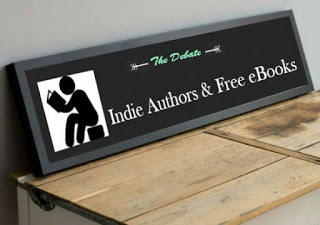 It’s no secret that when indie publishing started no one took it seriously. Even trade publishers who, at first failed to recognize it as a veritable threat to their hitherto uncontested monopoly, dismissed it as a fad anyway. But a fad it was not. The digital revolution had come to stay. All of a sudden, newly empowered indie authors found themselves competing as equals with well-established traditionally published authors, many of whom were bestsellers. But it was not an easy ride at all. Indie authors lacked the necessary exposure, the distribution outlet, and the budget to compete effectively with the big names, so they decided to pick their battles wisely - ignoring paperbacks and concentrating instead on ebooks which were easier to distribute online.
It’s no secret that when indie publishing started no one took it seriously. Even trade publishers who, at first failed to recognize it as a veritable threat to their hitherto uncontested monopoly, dismissed it as a fad anyway. But a fad it was not. The digital revolution had come to stay. All of a sudden, newly empowered indie authors found themselves competing as equals with well-established traditionally published authors, many of whom were bestsellers. But it was not an easy ride at all. Indie authors lacked the necessary exposure, the distribution outlet, and the budget to compete effectively with the big names, so they decided to pick their battles wisely - ignoring paperbacks and concentrating instead on ebooks which were easier to distribute online. In order to level the playing field, indie authors who transformed themselves into marketing gurus overnight came up with an idea that seemed brilliant at the time - a free ebook giveaway to stimulate demand and gain market share. It worked well at the beginning as such initiatives are wont to, however as many indies entered the fray, the situation changed. As a result, not only were indie authors competing with their traditionally published counterparts but now they were competing with other indie authors as well who, like them, were giving their books away for free, for the same reason.
In order to level the playing field, indie authors who transformed themselves into marketing gurus overnight came up with an idea that seemed brilliant at the time - a free ebook giveaway to stimulate demand and gain market share. It worked well at the beginning as such initiatives are wont to, however as many indies entered the fray, the situation changed. As a result, not only were indie authors competing with their traditionally published counterparts but now they were competing with other indie authors as well who, like them, were giving their books away for free, for the same reason. Fast-forward to today where Amazon and other online book retailers are so filled with free books that many readers don’t see a reason why they should spend money on books. In fact, even the rationale that giving out free books guarantee reviews does not hold true anymore. The bitter truth is that many readers now have their Kindle and other reading devices so stacked up with these freebies that they don't, in fact, feel compelled to leave a review in exchange for a free book. They now expect free books with no conditions attached. Interestingly, that’s what the book promotion sites that now proliferate the web promise them. As one author noted, “Why should they buy the milk when the cow is free?”
Fast-forward to today where Amazon and other online book retailers are so filled with free books that many readers don’t see a reason why they should spend money on books. In fact, even the rationale that giving out free books guarantee reviews does not hold true anymore. The bitter truth is that many readers now have their Kindle and other reading devices so stacked up with these freebies that they don't, in fact, feel compelled to leave a review in exchange for a free book. They now expect free books with no conditions attached. Interestingly, that’s what the book promotion sites that now proliferate the web promise them. As one author noted, “Why should they buy the milk when the cow is free?”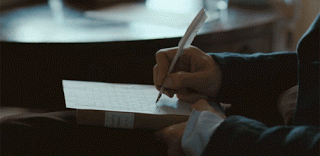 The writing community has debated the issue time and time again with no clear solution. One multi-genre author holds the view that book promotion sites have been brainwashed to think that it does not cost authors anything to give away copies of their ebooks. “It demonstrates the mentality of the public, and I’m sad to say that Indies are responsible for this misguided mentality,” she says. “These promotion sites don’t care if you give books away for free. They want you to give books away for free and purchase their promo to do it.”
The writing community has debated the issue time and time again with no clear solution. One multi-genre author holds the view that book promotion sites have been brainwashed to think that it does not cost authors anything to give away copies of their ebooks. “It demonstrates the mentality of the public, and I’m sad to say that Indies are responsible for this misguided mentality,” she says. “These promotion sites don’t care if you give books away for free. They want you to give books away for free and purchase their promo to do it.”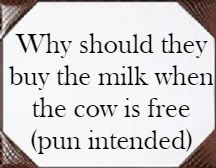 Regarding the argument that the strategy isn’t new because even traditional publishers often give out hundreds of ARCs, she asserts that they, in fact, give out ARCs to reputable reviewers, not to the general public. Even in cases where the public has access to the ARCs, for example, through NetGalley et al, she believes these publishers have a huge promotional budget as well as the tools to manage the outcome, but indie authors are generally disadvantaged when their books get pirated. As if to buttress her argument, a recent report revealed that members of a well-known review site were caught sharing ARCs—the hard work of many authors—with their friends and families, works that were sent in for review but ended up pirated.
Regarding the argument that the strategy isn’t new because even traditional publishers often give out hundreds of ARCs, she asserts that they, in fact, give out ARCs to reputable reviewers, not to the general public. Even in cases where the public has access to the ARCs, for example, through NetGalley et al, she believes these publishers have a huge promotional budget as well as the tools to manage the outcome, but indie authors are generally disadvantaged when their books get pirated. As if to buttress her argument, a recent report revealed that members of a well-known review site were caught sharing ARCs—the hard work of many authors—with their friends and families, works that were sent in for review but ended up pirated.
 So, has the FREE book marketing strategy turned out to be a boomerang against indie authors? Some think so. “People read books they pay for,” another author said, rubbishing the notion that free books help authors get reviews. She revealed a little experiment she did which seemed to confirm her idea. In it, she offered the first of her four-book series for free. It generated nearly 8000 downloads (and less than 20 sales of the other books in the series) but no reviews. For her, the reason was simple - the downloaded books were not read. “People aren’t shy about posting bad reviews, especially for free books,” she explained. “Readers are greedy and will scoop up free books, but never read them.”
So, has the FREE book marketing strategy turned out to be a boomerang against indie authors? Some think so. “People read books they pay for,” another author said, rubbishing the notion that free books help authors get reviews. She revealed a little experiment she did which seemed to confirm her idea. In it, she offered the first of her four-book series for free. It generated nearly 8000 downloads (and less than 20 sales of the other books in the series) but no reviews. For her, the reason was simple - the downloaded books were not read. “People aren’t shy about posting bad reviews, especially for free books,” she explained. “Readers are greedy and will scoop up free books, but never read them.” To verify that claim, she put a $0.99 price tag on the book she previously offered for free—the first book in the series—and got nearly 180 downloads (and more than 30 sales of the other books in the series). A few of the readers left reviews and the result astounded her. “Readers don’t read free books unless they are from a big-name author,” she said. “I find that readers will buy $0.99 books and actually read them. If indies stop offering free books, they might be surprised to see that people will actually cough out the ‘couch change’ and then really read their books. And leave reviews. Maybe it’s time for indie authors to stop shooting themselves in the foot.”
To verify that claim, she put a $0.99 price tag on the book she previously offered for free—the first book in the series—and got nearly 180 downloads (and more than 30 sales of the other books in the series). A few of the readers left reviews and the result astounded her. “Readers don’t read free books unless they are from a big-name author,” she said. “I find that readers will buy $0.99 books and actually read them. If indies stop offering free books, they might be surprised to see that people will actually cough out the ‘couch change’ and then really read their books. And leave reviews. Maybe it’s time for indie authors to stop shooting themselves in the foot.”
Published on April 14, 2019 08:15
March 3, 2019
Indie Publishing
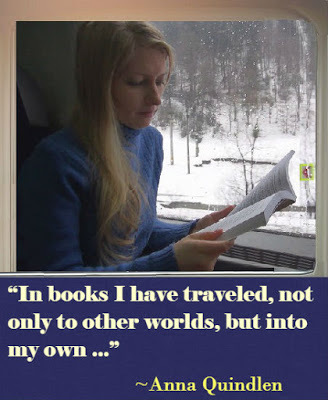 Freedom vs Quality
Freedom vs QualityThese days, debates are rife about the qualities inherent in good writing or the presumed lack thereof in some indie literature. Following a digital revolution which saw decision-making power slip from the hands of literary agents/trade publishers to individual writers, these debates have triggered a craving for the authentication of readers and the public at large.
Such craving for authentication, sadly, has sparked a kind of rat race because the literary marketplace is congested. And, owing to the desire to stand out in such a congestion marketplace, book reviews are in great demand. Overnight, on book blogs and review sites, opinion leaders have risen to the challenge, some charging a fee for their thoughts and ‘professional opinions.’
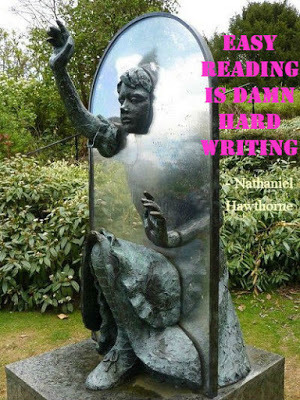 Interestingly, for many of the self-proclaimed experts, the huge demand for book reviews which sometimes borders on desperation is tantamount to “a right” to heap praise and/or criticism, often undeservedly, on the ever-increasing output of indie publications.
Interestingly, for many of the self-proclaimed experts, the huge demand for book reviews which sometimes borders on desperation is tantamount to “a right” to heap praise and/or criticism, often undeservedly, on the ever-increasing output of indie publications. No matter, one fact remains unaltered - in this digital era where anyone can become a published author and a single eBook can be seen as a momentous achievement, little attention is being paid to depth and technique. That’s partly because in this day and age, stardom - including literary renown - is social media-driven, and many readers, usually friends and family members tend to lap up whatever their beloved new author throws at them.
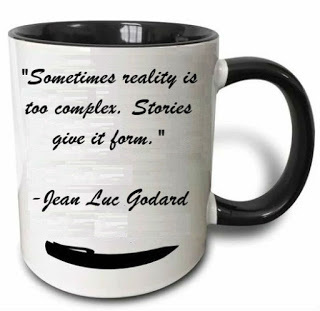 In the past, a good piece of literature was recognized both for its timelessness and the power of the message it conveyed, which affected thoughts and feelings no matter what era or place it was set in. Not so today. Frivolity seeps through every fabric of society the way water seeps through the soles of boots, and this, as some think, has permeated the arts and literature as well.
In the past, a good piece of literature was recognized both for its timelessness and the power of the message it conveyed, which affected thoughts and feelings no matter what era or place it was set in. Not so today. Frivolity seeps through every fabric of society the way water seeps through the soles of boots, and this, as some think, has permeated the arts and literature as well. 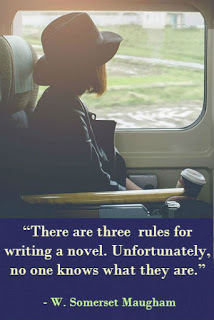
It is okay to hold the view that not everything that goes through the mind ought to end up as a book because a written work should have a keen aesthetic sense. It should be distinguished as a literary culture of value. To this end, I believe there is a difference between a writer and a storyteller. As Marianne Moore puts it, “If technique is of no interest to a writer, I doubt that the writer is an artist.”
Therein lies the difference between a storyteller and a writer, for, while a writer uses written words in various styles and techniques to tell a story, a storyteller narrates events in words, sometimes in images and sounds as well. Writing is a serious business. While everyone can tell a story, not everyone can be a writer. According to Carlos Ruiz Zafón, “The only way you can truly get to know an author is through the trail of ink he leaves behind him. The person you think you see is only an empty character: truth is always hidden in fiction.”
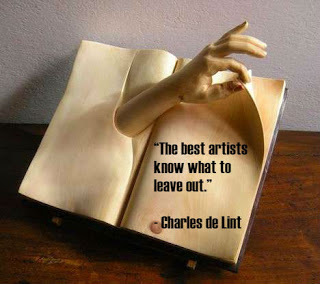 “All great truths begin as blasphemies.” - George Bernard Shaw
“All great truths begin as blasphemies.” - George Bernard Shaw“Art is either plagiarism or revolution” - Paul Gauguin “Stories of imagination tend to upset those without one.” - Terry Pratchett “Start with what is right rather than what is acceptable” - Franz Kafka “I think you can leave the arts, superior or inferior, to the conscience of mankind.” - William Butler Yeats

Published on March 03, 2019 12:00
February 3, 2019
Author Recipe
FOOD, FICTION, FOOLISHNESS
 When author Ann Everett scheduled Augustine Sam for her Food, Fiction, and Foolishness feature, she didn’t know he’d submit a spaghetti recipe, which she said was fancier than the one she posted weeks earlier. To help her American fans understand the recipe, she offered a link to the gourmet sleuth website for conversion to U.S. measurements and said she loved that the author used a photo of himself in the foolishness section. Oh, she loved the funny quote too!FOOD
When author Ann Everett scheduled Augustine Sam for her Food, Fiction, and Foolishness feature, she didn’t know he’d submit a spaghetti recipe, which she said was fancier than the one she posted weeks earlier. To help her American fans understand the recipe, she offered a link to the gourmet sleuth website for conversion to U.S. measurements and said she loved that the author used a photo of himself in the foolishness section. Oh, she loved the funny quote too!FOOD
 Recipe: Spaghetti alla Carbonara
Recipe: Spaghetti alla Carbonara
Ingredients:
Spaghetti - about 400gPancetta - about 200g (bacon)Egg yolks - about 4Pepper - q.s. quantum sufficit (whatever’s enough)Salt - q.s. Oil - q.s.Pecorino - about 50g (Italian sheep’s milk cheese)
Preparation: 1) Cook the spaghetti in boiling water with little salt. The pasta should not be too soft or overdone, it should, instead, be cooked to be firm to the bite (“al dente” in Italian).2) In the meantime, cut the bacon or pork cheek into cubes, letting it dissolve in a pan with little oil.3) When the bacon or cheek lard fat partially melts, add a little water and cook over moderate heat for about ten minutes.4) Beat the egg yolks in a salad bowl, as if to make an omelet, add the Pecorino cheese and a pinch of black pepper.5) Mix the ingredients: Pour the bacon or cheek lard over the spaghetti cooked “al dente”, and add the beaten egg yolks prepared with the cheese, mixing them until they are firm, then serve your Spaghetti alla Carbonara hot.
FICTION The saga of a compelling backward journey through a broken mind
 Paige Lyman, an accomplished psychiatrist, is on the verge of madness but she doesn’t know it yet. The madness begins when she gets it into her head to write her memoirs. As her brilliant mind assembles bits and pieces of her life for the book, ugly skeletons, long forgotten in the closet, begin to rear their heads.
Paige Lyman, an accomplished psychiatrist, is on the verge of madness but she doesn’t know it yet. The madness begins when she gets it into her head to write her memoirs. As her brilliant mind assembles bits and pieces of her life for the book, ugly skeletons, long forgotten in the closet, begin to rear their heads.
It had all begun with a simple act of love. And love, for her, was a blond-haired Irish boy named Bill, so when Bill abandoned her for priesthood the world around her collapsed. Now seized by a different passion—vengeance—she seeks her proverbial pound of flesh in the beds of various priests.
But that’s before she meets Stern W. And now, she’s transformed from a psychiatrist to a patient, and saddled with dark memories she must decipher in order to be free…


FOOLISHNESS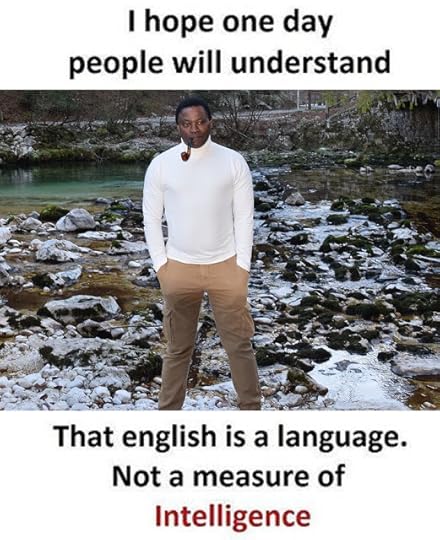 Funny Book quote
:
Funny Book quote
:
“Always read stuff that will make you look good if you die in the middle of it.” - P.J. O’Rourke
 When author Ann Everett scheduled Augustine Sam for her Food, Fiction, and Foolishness feature, she didn’t know he’d submit a spaghetti recipe, which she said was fancier than the one she posted weeks earlier. To help her American fans understand the recipe, she offered a link to the gourmet sleuth website for conversion to U.S. measurements and said she loved that the author used a photo of himself in the foolishness section. Oh, she loved the funny quote too!FOOD
When author Ann Everett scheduled Augustine Sam for her Food, Fiction, and Foolishness feature, she didn’t know he’d submit a spaghetti recipe, which she said was fancier than the one she posted weeks earlier. To help her American fans understand the recipe, she offered a link to the gourmet sleuth website for conversion to U.S. measurements and said she loved that the author used a photo of himself in the foolishness section. Oh, she loved the funny quote too!FOOD
 Recipe: Spaghetti alla Carbonara
Recipe: Spaghetti alla Carbonara
Ingredients:
Spaghetti - about 400gPancetta - about 200g (bacon)Egg yolks - about 4Pepper - q.s. quantum sufficit (whatever’s enough)Salt - q.s. Oil - q.s.Pecorino - about 50g (Italian sheep’s milk cheese)
Preparation: 1) Cook the spaghetti in boiling water with little salt. The pasta should not be too soft or overdone, it should, instead, be cooked to be firm to the bite (“al dente” in Italian).2) In the meantime, cut the bacon or pork cheek into cubes, letting it dissolve in a pan with little oil.3) When the bacon or cheek lard fat partially melts, add a little water and cook over moderate heat for about ten minutes.4) Beat the egg yolks in a salad bowl, as if to make an omelet, add the Pecorino cheese and a pinch of black pepper.5) Mix the ingredients: Pour the bacon or cheek lard over the spaghetti cooked “al dente”, and add the beaten egg yolks prepared with the cheese, mixing them until they are firm, then serve your Spaghetti alla Carbonara hot.
FICTION The saga of a compelling backward journey through a broken mind
 Paige Lyman, an accomplished psychiatrist, is on the verge of madness but she doesn’t know it yet. The madness begins when she gets it into her head to write her memoirs. As her brilliant mind assembles bits and pieces of her life for the book, ugly skeletons, long forgotten in the closet, begin to rear their heads.
Paige Lyman, an accomplished psychiatrist, is on the verge of madness but she doesn’t know it yet. The madness begins when she gets it into her head to write her memoirs. As her brilliant mind assembles bits and pieces of her life for the book, ugly skeletons, long forgotten in the closet, begin to rear their heads.It had all begun with a simple act of love. And love, for her, was a blond-haired Irish boy named Bill, so when Bill abandoned her for priesthood the world around her collapsed. Now seized by a different passion—vengeance—she seeks her proverbial pound of flesh in the beds of various priests.
But that’s before she meets Stern W. And now, she’s transformed from a psychiatrist to a patient, and saddled with dark memories she must decipher in order to be free…


FOOLISHNESS
 Funny Book quote
:
Funny Book quote
:“Always read stuff that will make you look good if you die in the middle of it.” - P.J. O’Rourke
Published on February 03, 2019 06:24
January 6, 2019
Coffee Chat
 Welcome, Booklovers!
Welcome, Booklovers!By Ally Shields
Grab that much-needed coffee this morning and join me in meeting mystery/thriller writer, Augustine SamAlly: Good morning, Augustine. How do you take your coffee?
 AS:
I like my coffee extra-strong with a smidgen of sugar. Normally, I drink espresso - the traditional Italian coffee - now and then, depending on my mood, I like to have it ‘corrected’ with a shot of grappa (the grape-based brandy of Italian origin), which is the kind of coffee Italians call “caffè corretto”).
AS:
I like my coffee extra-strong with a smidgen of sugar. Normally, I drink espresso - the traditional Italian coffee - now and then, depending on my mood, I like to have it ‘corrected’ with a shot of grappa (the grape-based brandy of Italian origin), which is the kind of coffee Italians call “caffè corretto”).
Ally: Ah, I see. Like I occasionally "correct" with Baileys! :)
Author bio:
 Augustine SamAugustine Sam is a journalist by profession, a novelist by choice, and a poet by chance. A member of the U.K. Chartered Institute of Journalists, he was formerly Special Desk editor at THISDAY newspapers, an authoritative Third World daily, first published with the Financial Times of London. He later became a correspondent for central Europe. In addition to pursuing hard news, he fell in love with poetry the way you fall asleep: slowly, and then all at once. He was the winner of the Editors’ Choice Award in the North America Open Poetry Contest organized by the National Library of Poetry, USA. And his poetry collection, Flashes of Emotion, was a finalist in the International Book Award Contest.
Augustine SamAugustine Sam is a journalist by profession, a novelist by choice, and a poet by chance. A member of the U.K. Chartered Institute of Journalists, he was formerly Special Desk editor at THISDAY newspapers, an authoritative Third World daily, first published with the Financial Times of London. He later became a correspondent for central Europe. In addition to pursuing hard news, he fell in love with poetry the way you fall asleep: slowly, and then all at once. He was the winner of the Editors’ Choice Award in the North America Open Poetry Contest organized by the National Library of Poetry, USA. And his poetry collection, Flashes of Emotion, was a finalist in the International Book Award Contest. Something unique/unusual that isn’t in your regular bio:
I’m fascinated by ancient architecture. By that I mean I have a somewhat childlike excitement about it. In fact, the sight of those magnificent, primal constructions, and tales of ancient civilizations always fill me with awe. I don’t know about other people but I find the mathematical precision by which measurements, structural dimensions, and space were figured out in an era where there were no computers to be inspiring. Not surprisingly, therefore, my travel destinations are often determined by the prospect of such relics-themed sightseeing.
The Coffee Chat:
Ally: Where do you get your story ideas?
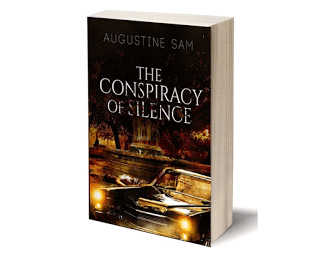
AS: I sometimes get story ideas from events I have witnessed or from bizarre stories I’ve heard and sometimes my story ideas are figments of my imagination. But the idea for The Conspiracy of Silence came from a radio play I wrote when I was a student. It was a half-hour radio drama that revolved around a murder that threatened the career of a very successful musician. As it turned out, his sister who was the only one that knew of his innocence could not, due to an intricate chain of events, prove it. When the play was aired, I felt it was too short to convey the kind of emotion that should naturally accompany a tense plot such as that. So, years later, I developed the plot into a mystery/thriller novel complete with legal intrigues and all the accompanying drama that was missing in the radio play.
Ally: How did you get that first book or story published?

AS: My debut novel, Take Back the Memory, was rejected by several literary agents and big-name publishers because, as one of them told me, “I had no name.” For someone who didn’t understand the industry, it was very unsettling for me because I had no idea how to go about “getting a name,” and it shattered the notion I had in my head that writers were published because they had a talent and their books had potential, not because they had a name. After years of querying agents and publishers, I decided to take a break and concentrate on my day job - journalism. Eventually, a small press in the state of Minnesota accepted the book and published it without fanfare and, consequently, without the commercial success I had hoped for. But the process opened my eyes to the possibility of self-publishing. I haven’t looked back since.
Ally: Why did you start writing? Why fiction? What keeps you writing?

AS: I started writing because I love storytelling and because it offers me a unique opportunity to reach people, which is a big deal for an introvert like me. Actually, I had a passion for writing even as a kid. I remember that while some of my friends kept toys, I kept piles of notebooks where I created stories mainly for the pleasure of my two sisters who, by the way, were my first real fans and readers. Why fiction? Well, sometimes we read fiction to ‘escape’ and sometimes we do so to be entertained and to be informed because fiction, in manifold ways, gives us valuable insights into many of life’s realities. What keeps me writing is the desire to tap into that reality.
 Ally: What three books in your genre would you recommend to fans (after they’ve read your books, of course!)
Ally: What three books in your genre would you recommend to fans (after they’ve read your books, of course!)AS: I would recommend (1) Presumed Innocent by Scott Turow (2) Split Second by David Baldacci & (3) Tears of God by Steven F. Freeman
Ally: What is your next writing project? Anticipated release date?
AS: My next writing project is a trilogy - a literary thriller with romantic elements. I can’t say more at this time. Though the first part is now in the editing stage, I’m unable to proffer an anticipated release date because I haven’t laid the groundwork for it yet.
Ally: Are you ready for some quick answer questions?
favorite book: The Collected Oscar Wildean author (living or dead) you’d love to take to lunch: Agatha Christiefavorite tv show: Breaking Badfavorite song: “Dignity” by Bob Dylanfavorite quote: “Be yourself; everyone else is taken.” - Oscar WildeAlly: It has been a pleasure chatting with you, Augustine. Before you go, please show us your featured book, The Conspiracy of Silence.
A ‘hypnotic’ political thriller…with an epic courtroom showdown.

The conscience of a town steeped in sexism, vanity, and hypocrisy is pricked by the brutal murder of a mysterious woman in a park in Los Angeles. But the shock is transformed into a steamy, seductive scandal when the corpse turns out to be Susan Whitaker, the flamboyant wife of the governor of California. An intricate shuffle of accumulating leaks soon lead the police to the delicate theory of secret lover/blackmailer, and to the indictment of Benjamin Carlton, Hollywood’s most influential celebrity.
Then curious things begin to happen when Carlton’s ambitious girlfriend, Rita Spencer inadvertently unearths the shocking secret that Susan Whitaker did not, in fact, exist. She little realizes however that her discovery of this colossal fraud is a mere curtain raiser to a chilling world of ugly skeletons dating back to the assassination of a U.S. senator in a Washington hotel sauna, skeletons connected to riveting scandals in high places, skeletons the FBI and political king-makers will kill for...


Thanks for stopping by!
Published on January 06, 2019 08:56

